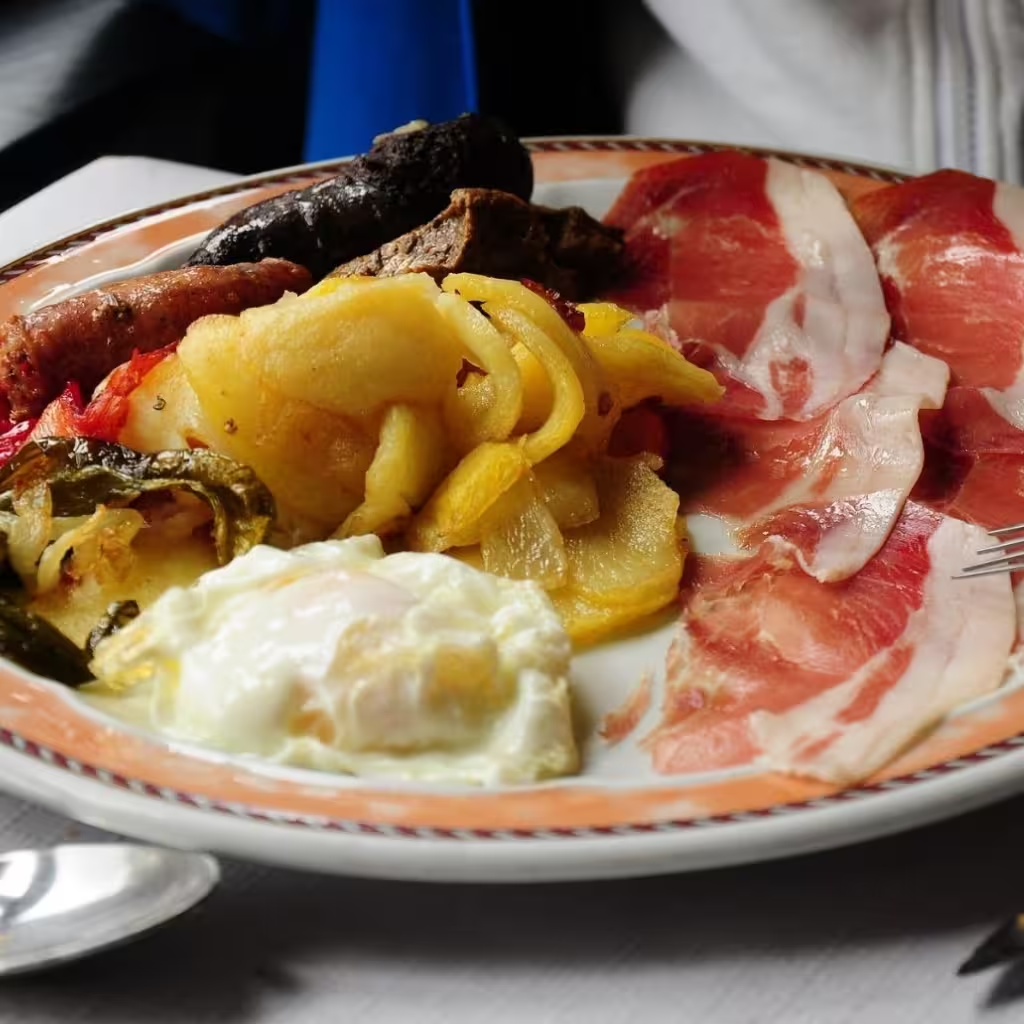Haven’t you tried the typical food of Granada yet?
Well, you should know that Granada’s gastronomy is a great attraction of the province, as it perfectly mixes flavors with Arab influences and Andalusian traditions.
The cuisine is based on fresh and nutritious products grown in the region, such as vegetables from the plains, meats for stews, and sausages from the Alpujarra.
We have made a fairly complete compilation of the typical dishes and desserts of Granada, ideal for knowing what to eat on your next visit to this city rich in history, tradition, and flavor.
From the famous Granada tapas that accompany each drink to the stews and typical desserts of Granada with an unmistakable Arab touch, every corner of the province offers unique flavors.
Typical Dishes of Granada – Definitive Guide to Granada Food
The main dishes of Granada are known for their tradition and their use of products from the garden and pork derivatives.
Granada-style Remojón (Orange and Cod Salad)
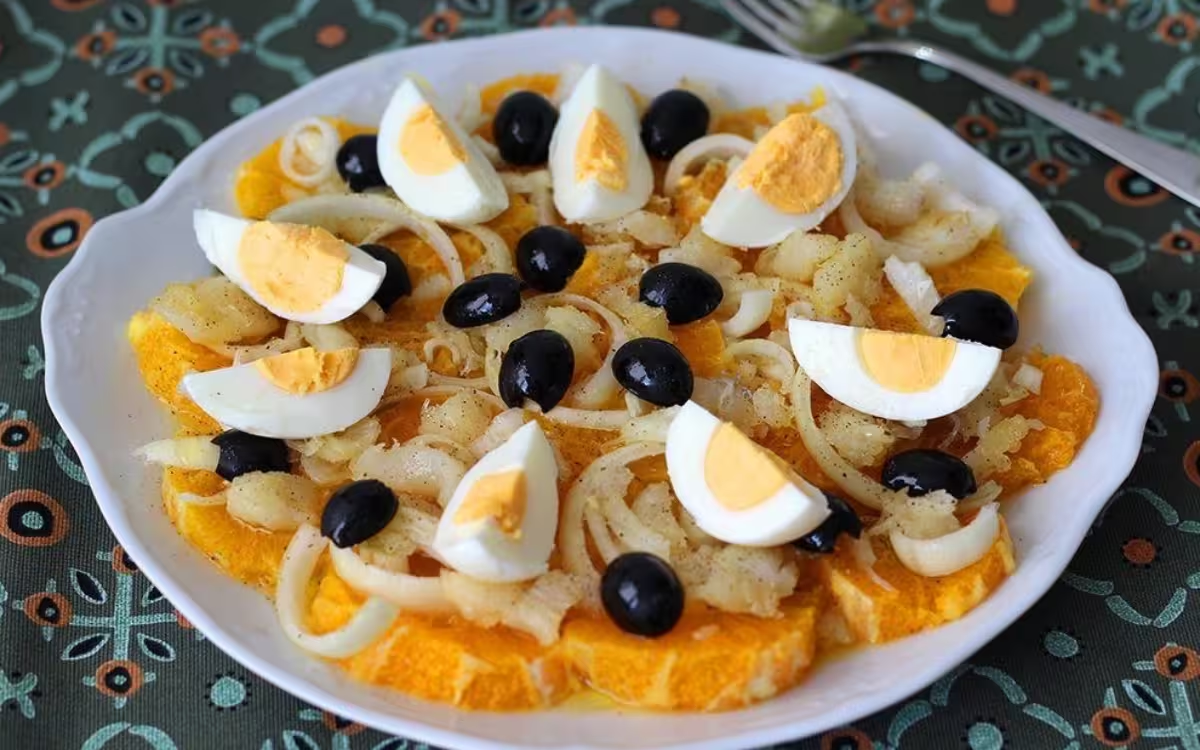
A food that cannot be missing from the list, the cold salad of peeled oranges, chopped with oil. Common variants include shredded cod, black olives, onion or spring onions, eggs, vinegar, paprika, potatoes, or tomato.
It is seasoned with virgin olive oil and can have sweet and salty flavors.
Of Arab origin. It is popular in Granada, Córdoba, and Jaén. It is ideal for the warm months.
Zalamandroña Salad
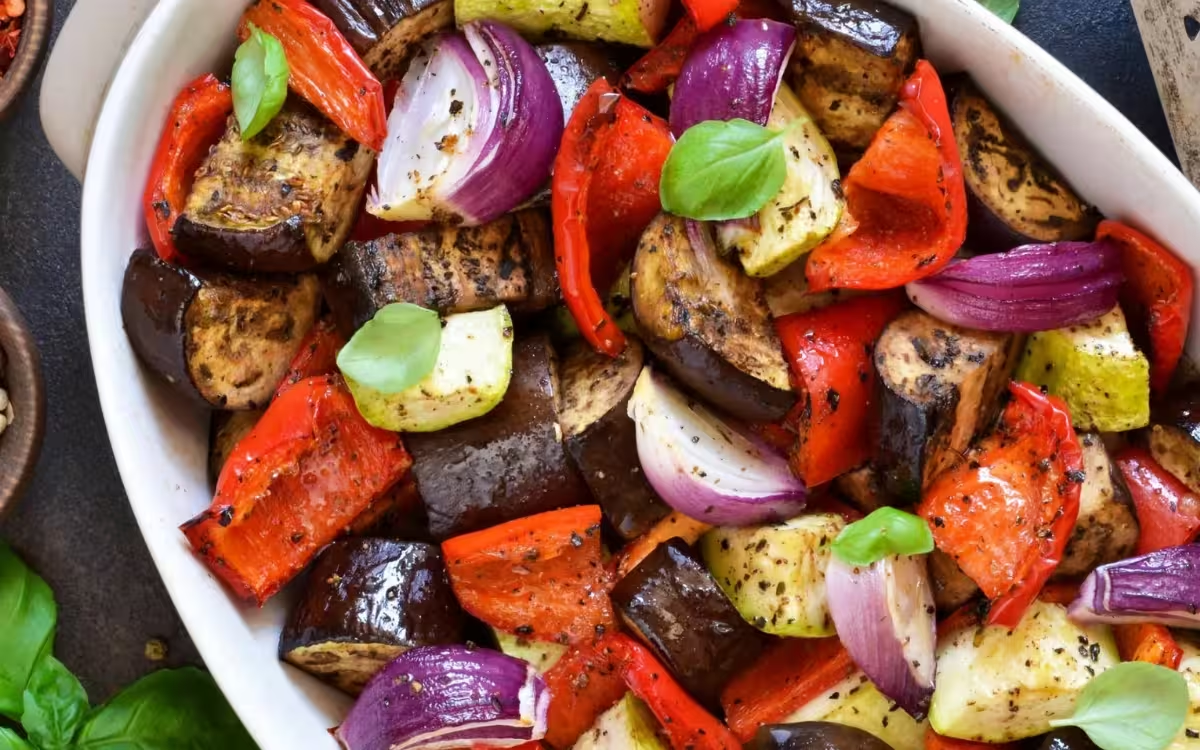
A food made with vegetables that have been previously sun-dried, such as pumpkin, dried tomato, zucchini, and roasted and dried pepper. Black olives and shredded cod, abundant pine nuts, and chopped onion are added. It is seasoned with black pepper and oregano. It is eaten cold.
Of Andalusian origin. It is typical of the Guadix region, especially popular in Huéneja.
Eggplants with Cane Honey
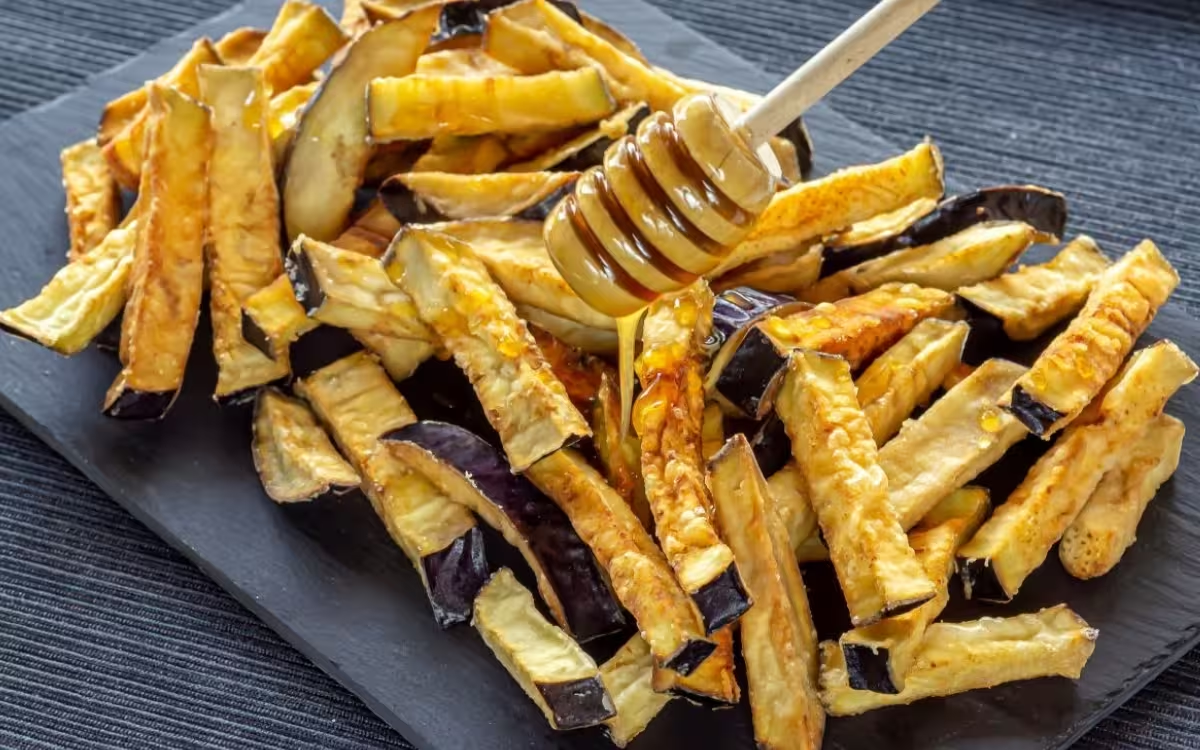
Within the typical food of the city, you cannot miss the eggplants, which are cut into slices or sticks, salt is added to remove the bitterness, they are floured and fried in plenty of hot olive oil.
When serving, a drizzle of cane honey is poured over them, without waiting for them to cool. The key is that they are crispy.
Of Arab origin. It is a very typical dish throughout Andalusia, being more popular in Granada and Córdoba. The bitter and sweet counterpoint is very balanced.
Tapas in Granada
When ordering a drink in most bars in Granada, a generous tapa is served. In some establishments, you can choose the available tapa. It is one of the essential elements of Granada’s gastronomy. The well-known areas for tapas include Calle Navas, the Cathedral area, Calle Elvira, the bullring, the Albaicín, and Plaza de la Trinidad.
Bread or Semolina Crumbs
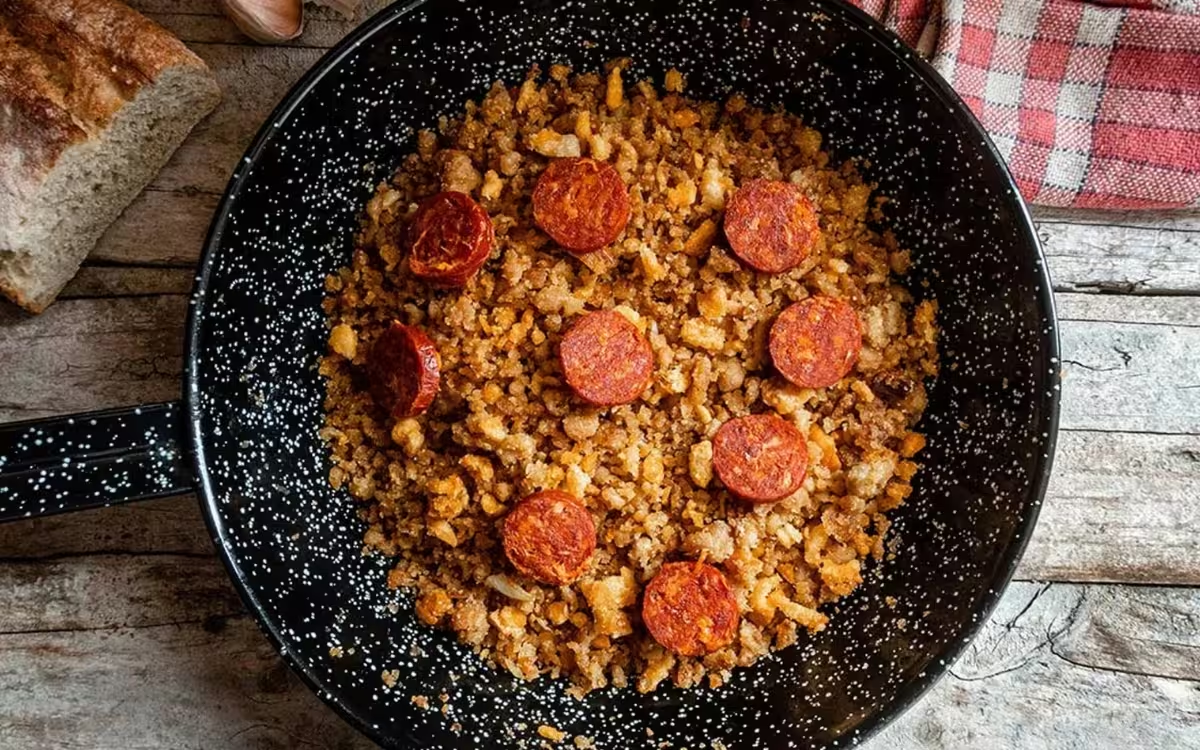
Originally, they were prepared to take advantage of stale bread, cooking it with bacon, garlic, oil, and peppers. It can be accompanied with fried egg, sardines, melon, or grapes. Sometimes wheat semolina is used instead of bread, making them faster, although less tasty.
Traditional winter dish that has become a frequent tapa
Main Courses, Stews, and Typical Stews of Granada
Broad Beans with Ham
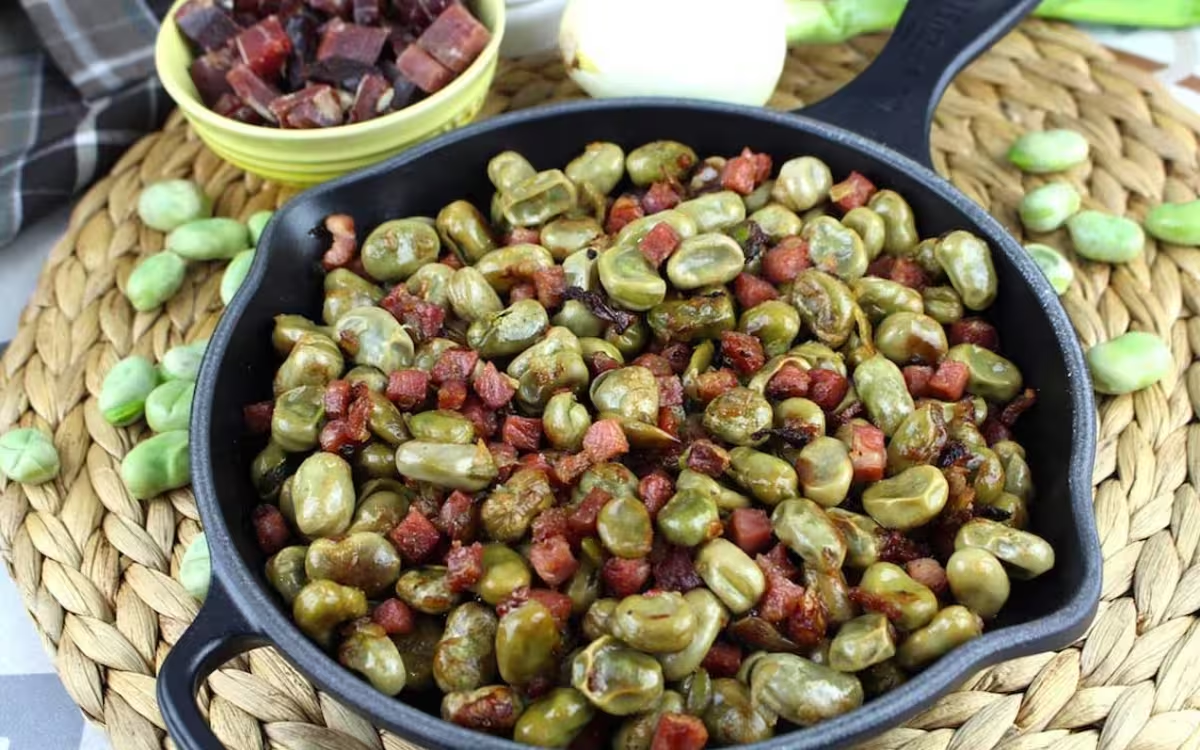
They are made with a sofrito (poached) and small cubes of ham, to which the broad beans are added. They are covered with beef, chicken, and vegetable broth and left to cook for about 15 minutes. Small broad beans (habitas) are a delicacy in spring. One of the typical Granada dishes.
Sacromonte Omelette
It is the traditional omelette of Granada, typical of the residents of the Sacromonte neighborhood. This typical food is prepared with different types of viscera, with the lamb’s testicles and brains being the most important. Peas, breadcrumbs, and nuts are often added. There are versions that incorporate chorizo, Trevélez ham, and potatoes.
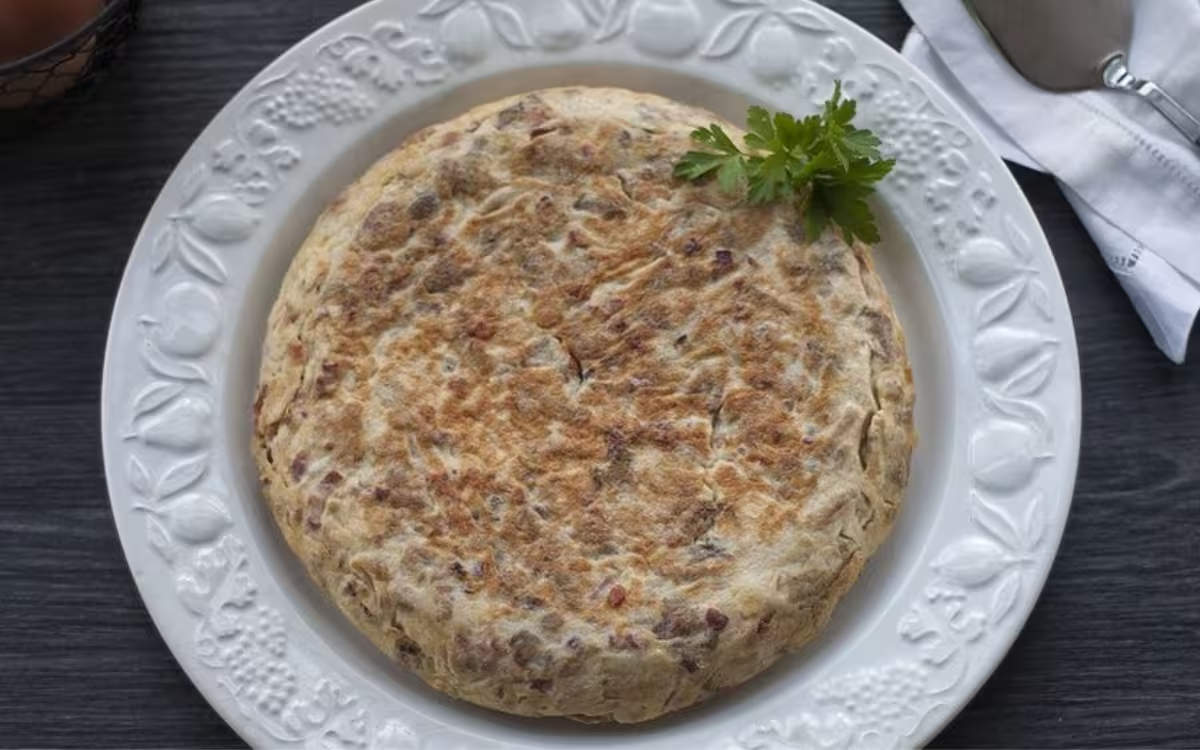
Plato Alpujarreño (Alpujarran Dish)
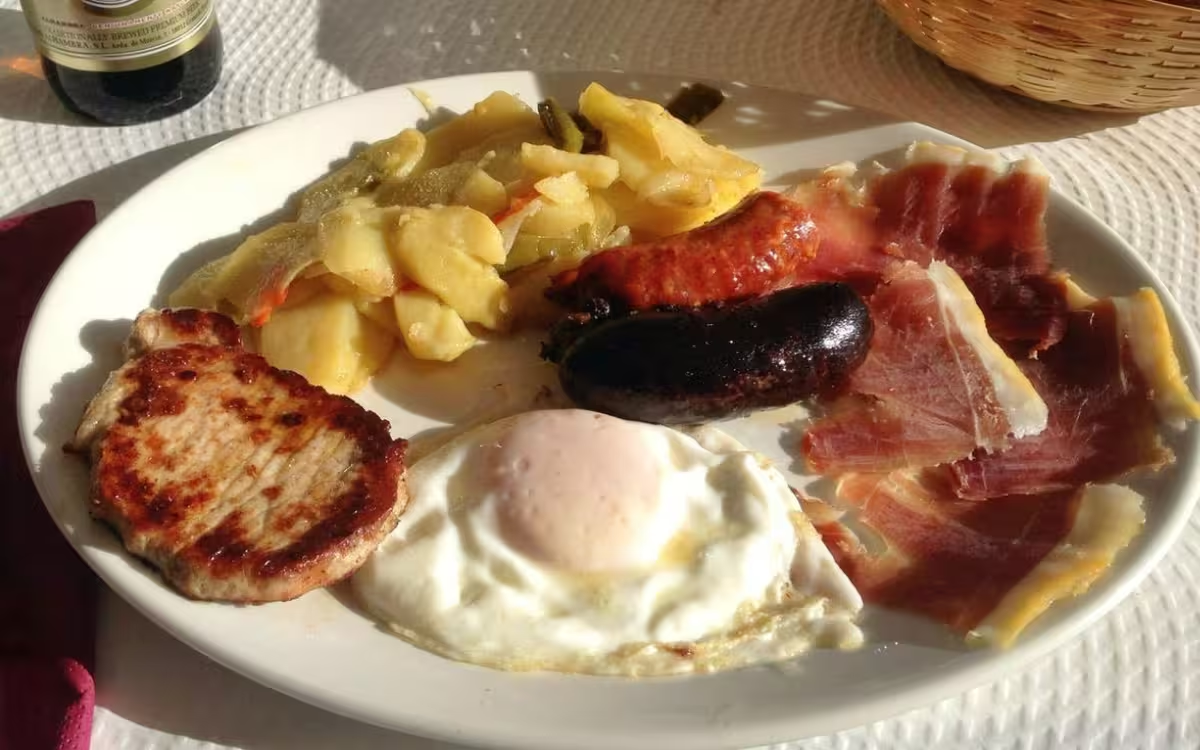
Possibly the most famous food in Granada. A dish from the Granada Alpujarra, very substantial in calories. It incorporates typical products of the region, such as pork loin in lard, black pudding, sausage, patatas a lo pobre (fried potatoes with garlic and peppers), fried egg, and Serrano ham.
Olla De San Antón (San Anton Stew)
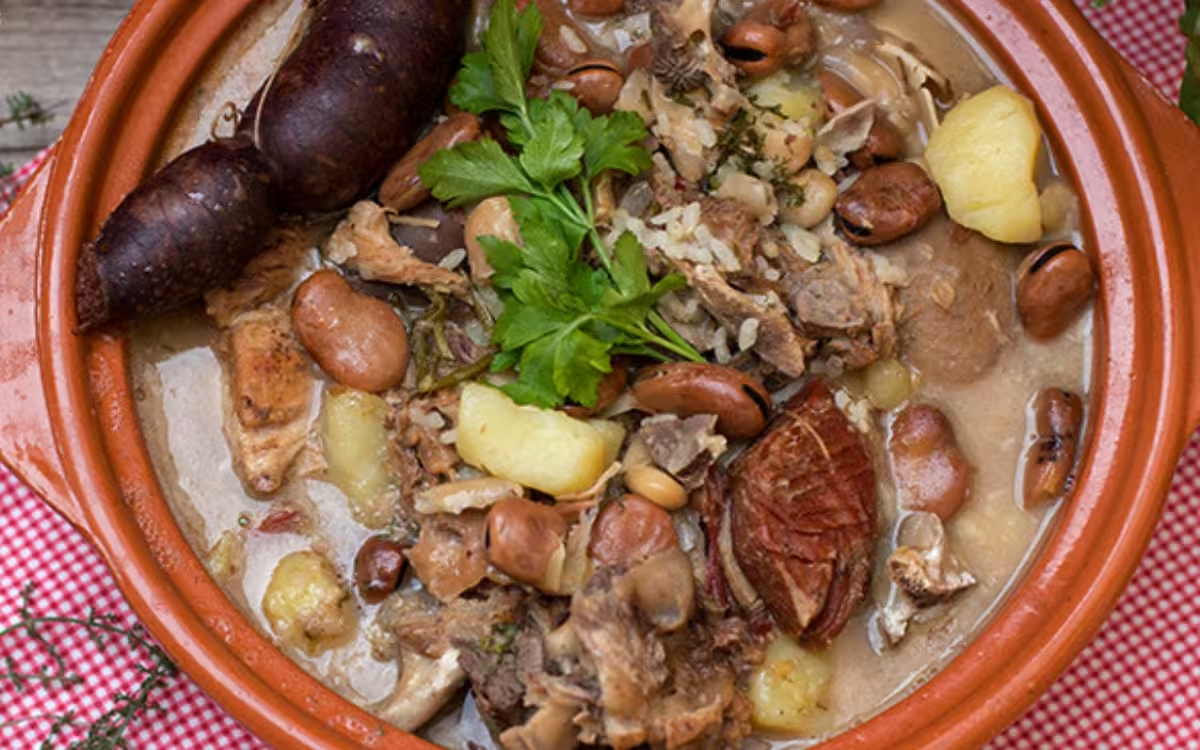
A very famous and abundant stew that commemorates the pig slaughter. It is mainly consumed around January 17, which is the day of San Antón.
It is made with a wide variety of pork products, such as ear, spine (fresh and dried), tail, bacon (fresh and dried), trotters, face, ham bone, black pudding, and pig’s feet, with a mixture of legumes (rice, white beans, or chickpeas).
The broth and legumes are served first, then the portion of pork, which is known as “la pringá“.
Choto Al Ajillo (Kid in Garlic Sauce)
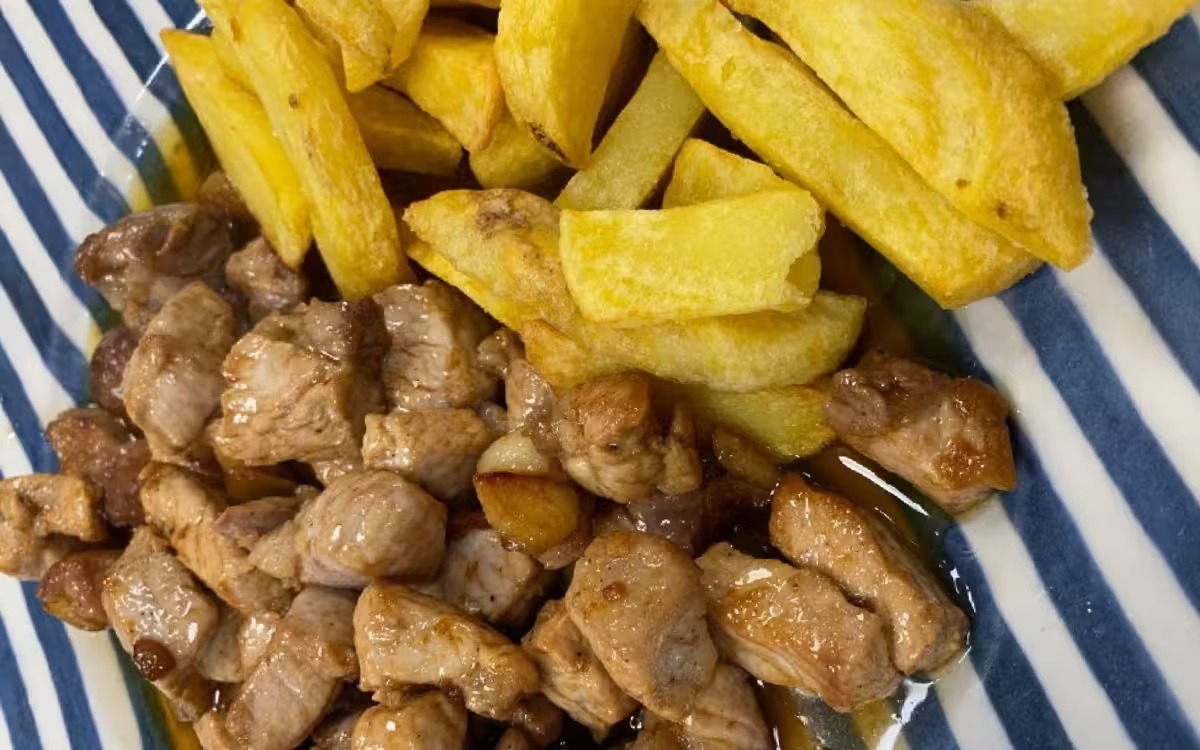
In this dish, the main meat is kid (choto).
The meat is browned with oil, peppers, and garlic, and then wine is added. A mash prepared with fried bread, almonds, and white wine is incorporated. To prevent the bones from splintering, a clean cut of the meat is important. It can be served together with zucchini or fried potatoes.
Moraga De Sardinas (Sardine Skewer)
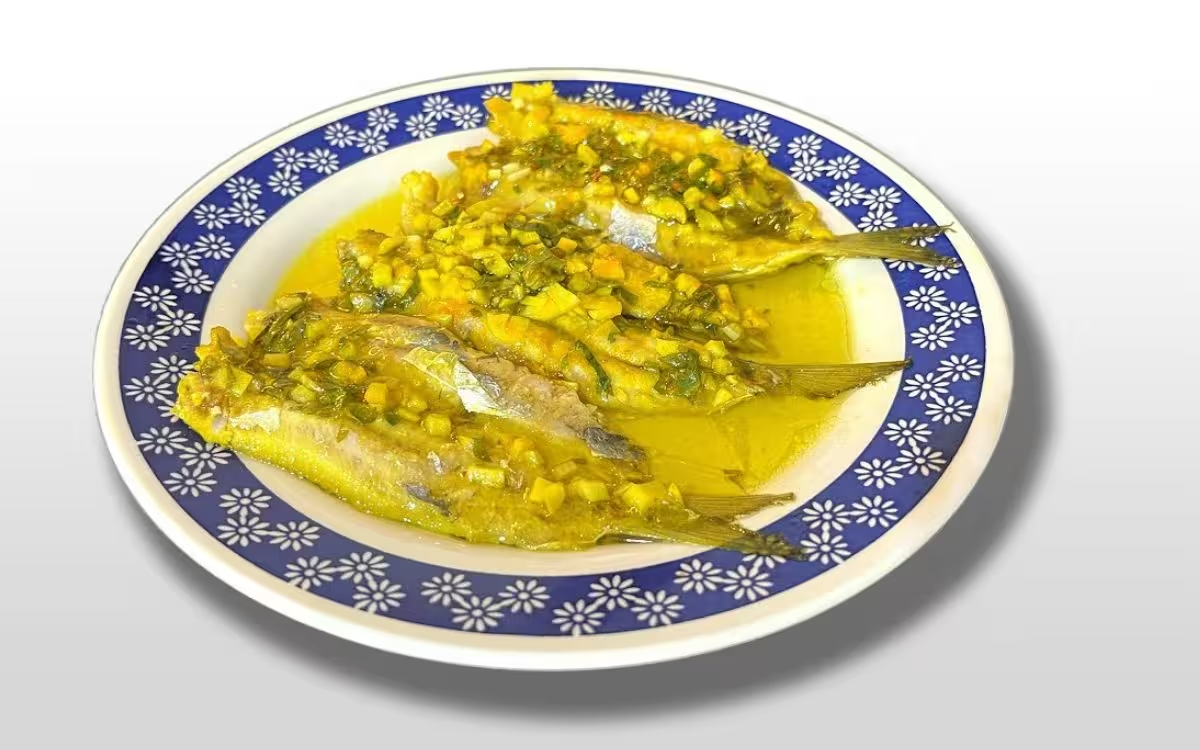
Typical seafood dish from the coastal areas of Granada, such as Motril. It is made with sardines grilled on the beach, or cooked in an earthenware pot bathed in white wine, virgin olive oil, lemon juice, chopped garlic, parsley, and salt. It is a tradition associated with summer festivals.
Potaje De Hinojos (Fennel Stew)
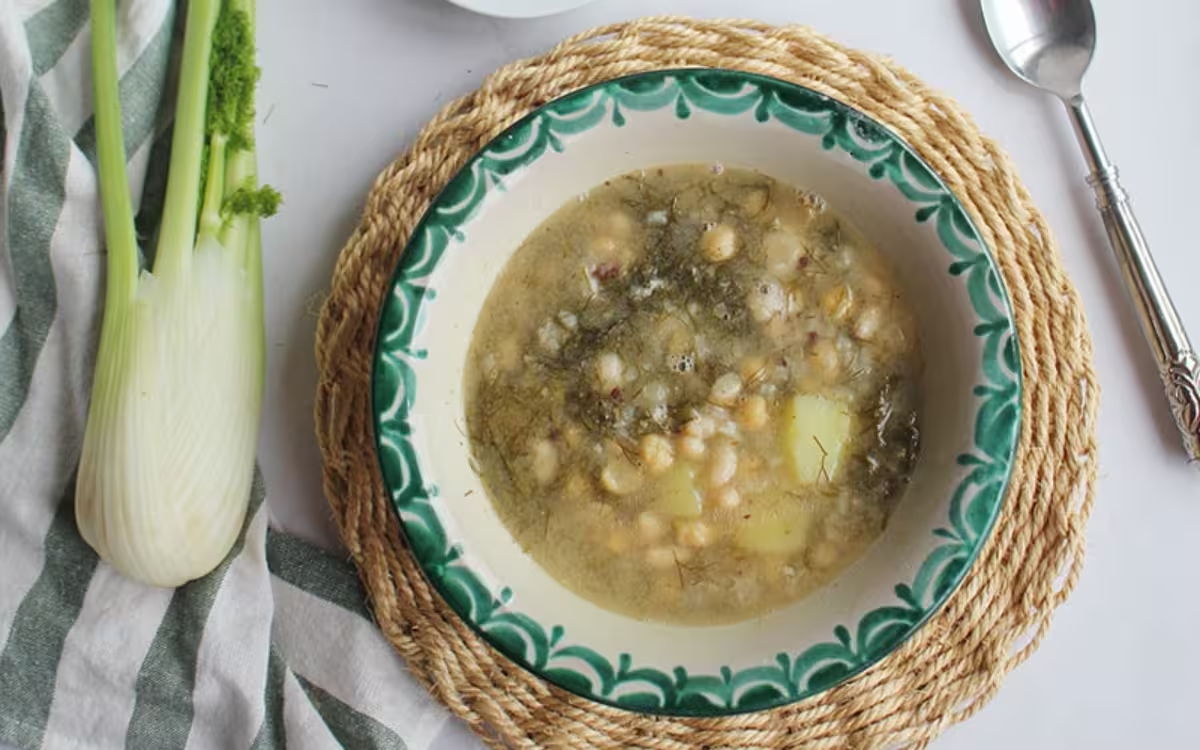
Another quite typical Granada food is the puchero or potaje de Hinojos. It is a white bean stew that is flavored with the green shoots of fennel. It is cooked with pork products, such as lean meat, black pudding, ham bone, bacon, and rib; sometimes a little rice is added to thicken it.
Gurupina
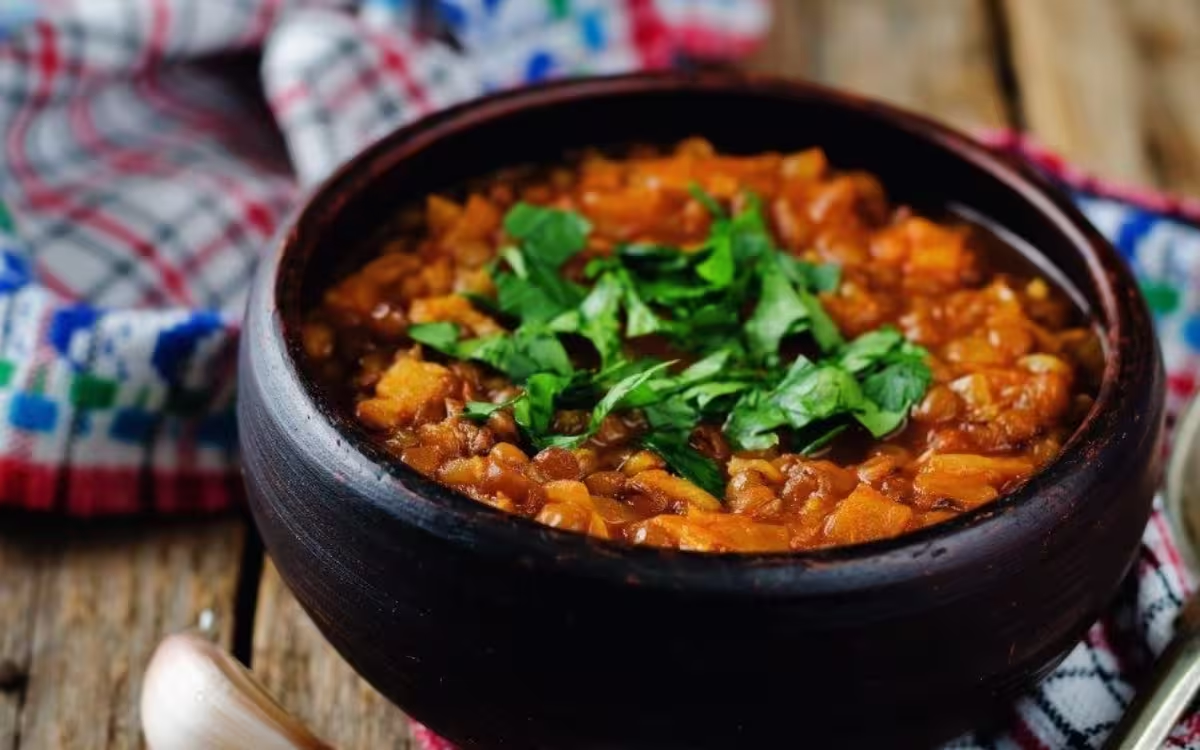
This dish is typical of the Baza region. This task consists of frying dried red pepper (which is then beaten) and sautéing onion, green pepper, chorizo, garlic, and tomato. Mushrooms, paprika, water, and flour are added, and it is cooked over low heat until a consistency similar to porridge is obtained.
Featured Products
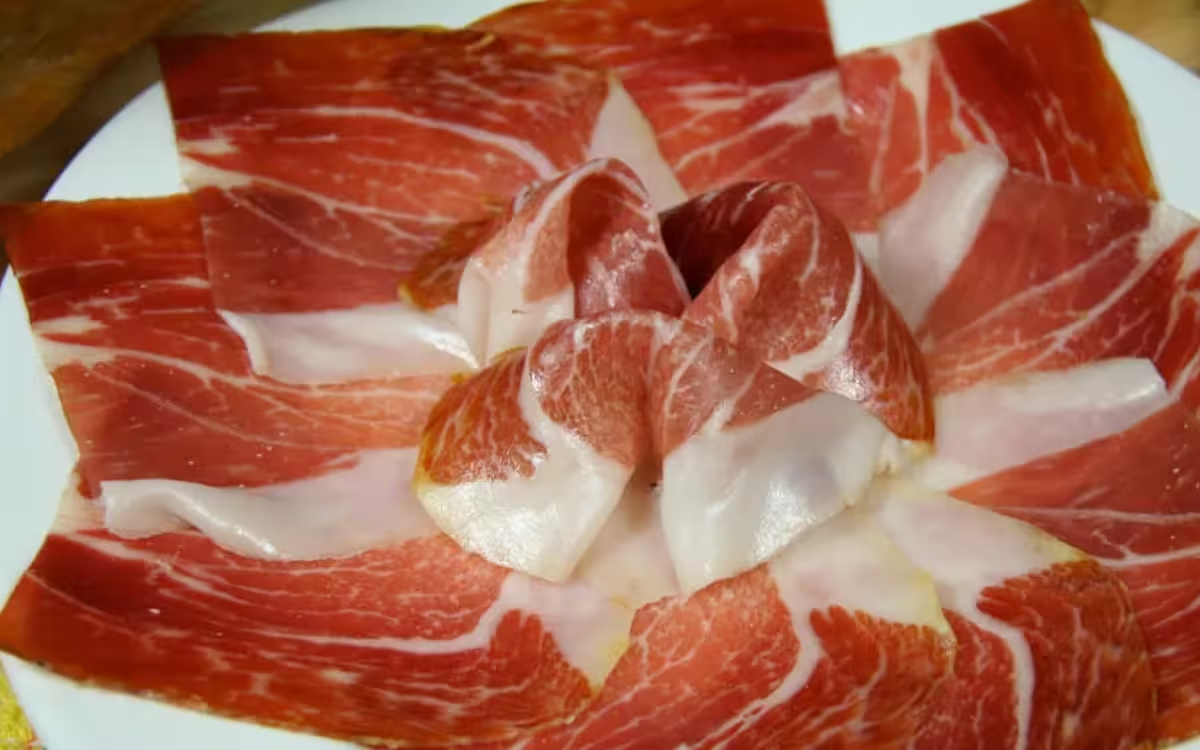
- Jamón de Trevélez: Known for its quality and flavor, naturally cured at 1700 meters above sea level.
- Quisquillas de Motril: A crustacean smaller and more thorny than shrimp, with an intense red color and a strong flavor. They are caught in specific fishing areas of Motril and are generally eaten boiled.
Traditional Desserts of Granada
Granada’s pastry is strongly influenced by the Arab culture, emphasizing the use of spices, honey, and almonds.
Piononos De Santa Fe

This is the most characteristic sweet of Granada, which was born in the city of Santa Fe. It is a small cake, which is made with a thin layer of sponge cake rolled in a cylindrical shape.
The sponge cake is soaked with very sweet syrup and decorated with toasted cream.
The cake was created by Ceferino Isla in 1854 as a tribute to Pope Pius IX (Pío Nono), whose image (with a cylindrical shape and covered) and zucchetto (of toasted cream color) served as inspiration.
Soplillos De La Alpujarra (Alpujarran Meringues)
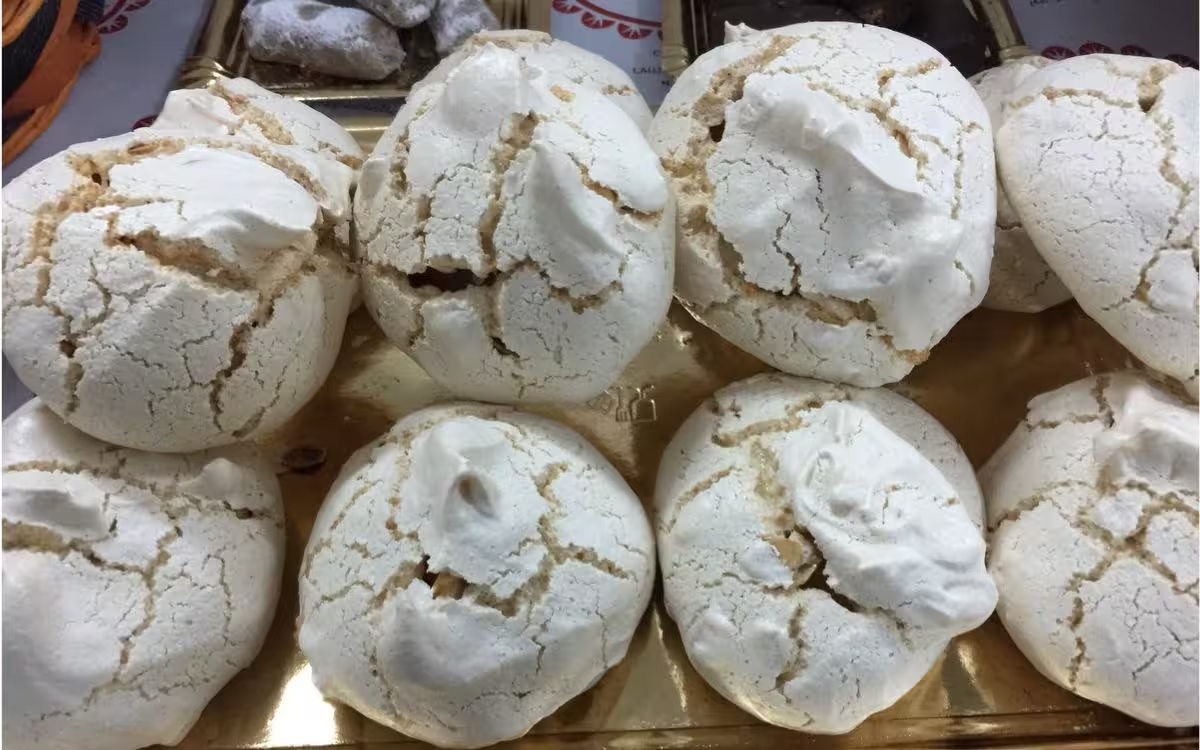
A traditional dessert with Arab roots from the province of Granada. Its main ingredients are almond, lemon, sugar, and egg.
To make a meringue, the egg whites are beaten with the sugar and then pieces of crushed almond and lemon zest are incorporated. Then it is baked at 100 degrees for two hours.
Roscos De Loja (Loja Doughnuts)

The roscos de Loja are a true Granada symbol. This sweet, covered with a layer of irresistible meringue, is a symbol of the city and a must-stop for all who visit it. No one can resist taking a box home, thanks to the traditional flavor and unique texture of this product.
Tocinillo De Cielo De Guadix (Guadix Custard)

The tocinillo de cielo de Guadix is an exquisite delicacy.
With its silky texture and intense flavor of yolk and sugar, this Andalusian dessert is a jewel of convent pastry that continues to conquer palates generation after generation.
Huesos De Santo (Saint’s Bones)

A very traditional dessert of Holy Week and All Saints’ Day are the huesos de santo.
Made with almond paste, filled with sweet yolk and sprinkled with icing sugar, they are small traditional bites that are as rich as they are addictive.
Cuajada De Carnaval De Granada (Granada Carnival Curd)

The cuajada de Carnaval is a traditional sweet of Granada that has Arab origins.
With a cinnamon and honey flavor, aromatic and creamy, it symbolizes the cultural legacy of the city and the taste of the Carnival festivities.
Pestiños Granadinos (Granada Fritters)

One of the most typical desserts of Granada are the pestiños. With an aniseed flavor and a Moorish nuance of its Andalusian origin, these are golden, crispy, and covered in honey.
Although any time is good to taste them, they are especially enjoyed at Christmas and Easter.
Sultanas De Coco Granadinas (Granada Coconut Sultanas)

The sweet Christmas craving in Granada are the sultanas de coco.
This sweet influenced by Arab culture, with a strong flavor and a delicate texture, conquers those who love coconut. Ideal to complement coffee or enjoy at any time of the day.
As you have been able to appreciate in this guide to typical Granada food, you have been able to see that this city is not only known for its history and its landscapes, but also for its rich and varied gastronomy.
Each dish represents the tradition and care with which food is prepared, offering unique flavors that conquer locals and visitors. From sweets like piononos to savory recipes like remojón granadino, the typical food of Granada is a true tribute to the culture and flavor of this Andalusian land.

